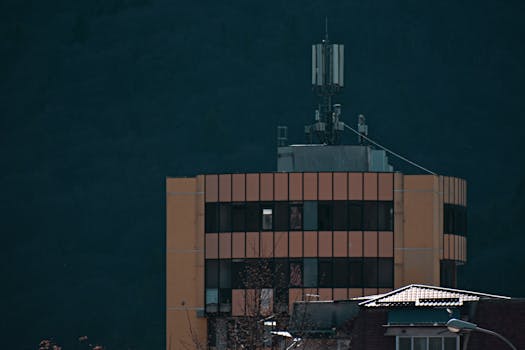
The Rise of Mega-Constellations: Latest Updates in Satellite Telecommunications
The Rise of Mega-Constellations: Latest Updates in Satellite Telecommunications. The satellite telecommunications industry is undergoing a significant transformation with the rise of mega-constellations. These large networks of satellites in low Earth orbit (LEO) are designed to provide global internet connectivity, revolutionizing the way we communicate and access information. In this article, we will explore the latest updates in satellite telecommunications, including the impact of mega-constellations on the industry.
Satellite telecommunications have been around for decades, but the traditional model of using a few large satellites in geostationary orbit (GEO) is being disrupted by the advent of mega-constellations. Companies such as SpaceX, OneWeb, and Amazon’s Kuiper Systems are launching thousands of small satellites into LEO to create a network of interconnected satellites that can provide high-speed internet access to anyone, anywhere in the world.
Benefits of Mega-Constellations
Mega-constellations offer several benefits over traditional satellite telecommunications systems. Firstly, they provide higher speeds and lower latency due to the closer proximity of the satellites to the Earth. This makes them ideal for applications such as online gaming, video streaming, and virtual reality. Secondly, mega-constellations can provide global coverage, including in areas where traditional telecommunications infrastructure is lacking. This can help bridge the digital divide and provide internet access to underserved communities.
Another benefit of mega-constellations is their ability to provide redundancy and backup connectivity. With multiple satellites in orbit, if one satellite fails or is taken offline, the network can reroute traffic through other satellites, ensuring continuous connectivity. This makes mega-constellations an attractive option for critical infrastructure, such as emergency response systems and financial networks.
Challenges and Concerns
While mega-constellations offer many benefits, they also pose several challenges and concerns. One of the main concerns is the potential for space debris. With thousands of satellites in orbit, there is a risk of collisions and the creation of debris that can harm other satellites and spacecraft. This has raised concerns among astronomers and space agencies, who are working to develop regulations and guidelines for the responsible use of space.
Another challenge is the issue of spectrum allocation. With multiple mega-constellations launching, there is a risk of interference and spectrum congestion. This has raised concerns among regulators, who are working to develop new regulations and guidelines for the use of spectrum in satellite telecommunications.
Additionally, there are concerns about the environmental impact of mega-constellations. The launch of thousands of satellites requires significant amounts of energy and resources, and the disposal of satellites at the end of their life can contribute to space debris. This has raised concerns among environmentalists, who are calling for more sustainable and responsible practices in the satellite industry.
Latest Developments and Updates
There have been several recent developments and updates in the satellite telecommunications industry. SpaceX has launched several batches of its Starlink satellites, with over 1,000 satellites currently in orbit. OneWeb has also launched several batches of its satellites, with plans to launch hundreds more in the coming years. Amazon’s Kuiper Systems has received approval from the FCC to launch its constellation of 3,236 satellites.
In addition, there have been several recent partnerships and collaborations in the industry. For example, SpaceX has partnered with Microsoft to provide satellite connectivity for its Azure cloud platform. OneWeb has partnered with Airbus to develop a new satellite platform, and Amazon’s Kuiper Systems has partnered with Verizon to provide satellite connectivity for its 5G network.
Regulators are also taking steps to address the challenges and concerns associated with mega-constellations. The FCC has established new rules for the use of spectrum in satellite telecommunications, and the ITU has developed new guidelines for the responsible use of space. Additionally, there are ongoing efforts to develop new technologies and standards for the mitigation of space debris and the promotion of sustainable practices in the satellite industry.
Conclusion
In conclusion, the rise of mega-constellations is transforming the satellite telecommunications industry. These large networks of satellites in LEO offer several benefits, including higher speeds, lower latency, and global coverage. However, they also pose several challenges and concerns, including the potential for space debris, spectrum congestion, and environmental impact. As the industry continues to evolve, it is likely that we will see significant developments and updates in the coming years, including new partnerships, technologies, and regulations.






